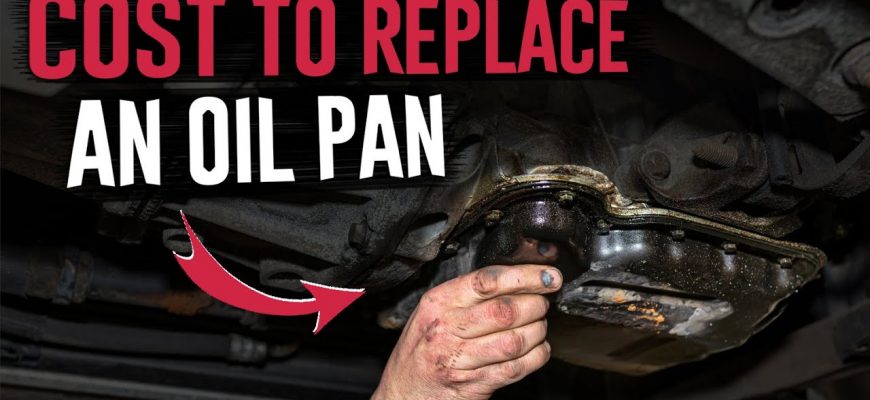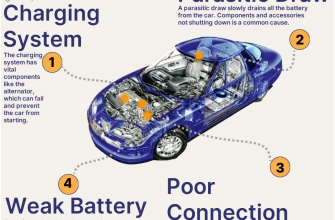When it comes to vehicle maintenance, the oil pan is often overlooked. However, it plays a crucial role in keeping your engine lubricated and running smoothly. If you find yourself facing an oil pan replacement, understanding the costs involved can help you prepare financially and make informed decisions. This guide will break down the factors affecting the cost of oil pan replacement, average prices, and what to expect during the process.
- Understanding the Oil Pan
- Factors Affecting Oil Pan Replacement Costs
- Average Oil Pan Replacement Costs
- Example Costs by Vehicle Type
- What to Expect During the Replacement Process
- Tips for Reducing Costs
- DIY vs. Professional Replacement
- Pros of DIY Replacement
- Cons of DIY Replacement
- Signs That Indicate an Oil Pan Replacement is Needed
- Preventive Measures
- Final Thoughts
Understanding the Oil Pan
The oil pan, also known as the sump, is located at the bottom of the engine and serves as a reservoir for engine oil. Its primary function is to collect and store oil that lubricates the engine components. Over time, oil pans can develop leaks or become damaged due to corrosion, road debris, or improper installation, necessitating replacement.
Factors Affecting Oil Pan Replacement Costs
- Type of Vehicle: The make and model of your vehicle significantly influence the cost. Luxury and high-performance vehicles often have more expensive parts and labor costs.
- Oil Pan Material: Oil pans can be made from various materials, including steel, aluminum, or composite. Aluminum pans tend to be more expensive than steel due to their lightweight properties and resistance to corrosion.
- Labor Costs: Labor rates vary by location and shop. Dealerships typically charge more than independent mechanics. The complexity of the job also affects labor costs; some vehicles require more time to access the oil pan.
- Additional Repairs: If the oil pan is being replaced due to damage, other components may need attention. For example, gasket replacements or repairs to surrounding parts can increase the overall cost.
Average Oil Pan Replacement Costs
The average cost for oil pan replacement ranges from $300 to $1,200, depending on the factors mentioned above. Here’s a breakdown:
- Parts: The oil pan itself typically costs between $50 and $300. Replacement gaskets or seals can add an additional $20 to $100.
- Labor: Labor charges can range from $100 to $150 per hour, with the total labor time for replacement usually between 2 to 5 hours.
Example Costs by Vehicle Type
- Economy Cars: $300 to $600
- Mid-Range Vehicles: $500 to $800
- Luxury Vehicles: $800 to $1,200
What to Expect During the Replacement Process
When you take your vehicle in for an oil pan replacement, here’s what you can expect:
- Diagnosis: The mechanic will inspect your vehicle to confirm that the oil pan is the source of the problem.
- Preparation: The vehicle will be lifted to access the oil pan, and the old oil will be drained.
- Removal: The mechanic will remove the damaged oil pan and clean the area to ensure a proper seal.
- Installation: The new oil pan will be installed with a fresh gasket to prevent leaks.
- Refill: New engine oil will be added, and the mechanic will check for leaks before returning the vehicle to you.
Tips for Reducing Costs
- Shop Around: Get quotes from multiple mechanics to find the best price.
- Ask About Warranty: Ensure the parts and labor come with a warranty for peace of mind.
- Regular Maintenance: Regularly check and maintain your oil levels to prevent oil pan damage.
Replacing an oil pan can be a significant expense, but understanding the costs and factors involved can help you navigate the situation more effectively. Whether you’re facing a minor leak or major damage, being informed can save you time and money in the long run. Always consult with a trusted mechanic to diagnose the issue and provide you with the best options for repair.
DIY vs. Professional Replacement
For those who are handy with tools, you may consider a do-it-yourself (DIY) approach to replacing your oil pan. While this can save you labor costs, it’s crucial to weigh the pros and cons before diving in.
Pros of DIY Replacement
- Cost Savings: You can save significantly on labor costs, which can account for a large portion of the total expense.
- Learning Experience: Handling the replacement yourself can deepen your understanding of your vehicle and its maintenance needs.
- Flexibility: You can work at your own pace, allowing for a less rushed process.
Cons of DIY Replacement
- Time-Consuming: Depending on your skill level, this task can take longer than anticipated.
- Risk of Mistakes: Inexperience can lead to errors that might worsen the issue or create new problems, resulting in higher costs down the line.
- Tool Requirements: You may need to invest in tools you don’t already own, which can offset some of the savings.
If you decide to take on the replacement yourself, make sure to follow a reliable guide or video tutorial specific to your vehicle model. Always prioritize safety by using proper tools and protective gear.
Signs That Indicate an Oil Pan Replacement is Needed
Recognizing the symptoms of a failing oil pan can save you from more extensive damage to your engine. Here are some common signs that may indicate the need for replacement:
- Oil Leaks: If you notice oil spots under your vehicle, it could be a sign of a leaking oil pan.
- Low Oil Levels: Frequent need to top off your engine oil can indicate a leak due to a damaged oil pan.
- Oil Pressure Warning Light: A drop in oil pressure can signal a problem with the oil pan or the oil circulation system.
- Unusual Engine Noises: If your engine is making knocking or clattering sounds, it could mean that it’s not getting enough oil, possibly due to a compromised oil pan.
Preventive Measures
Taking steps to prevent oil pan damage can save you time and money in the long run. Here are some tips to help maintain the integrity of your oil pan:
- Regular Inspections: Periodically check the oil pan and surrounding areas for any signs of rust, corrosion, or leaks.
- Routine Oil Changes: Keeping fresh oil in your engine not only enhances performance but also helps prevent sludge buildup that can damage the oil pan.
- Avoid Road Hazards: Be cautious of potholes and road debris that could potentially cause damage to your oil pan.
- Use Quality Oil and Filters: Invest in high-quality oil and filters that meet your vehicle’s specifications to ensure optimal engine performance.
Final Thoughts
While oil pan replacement may not be the most glamorous aspect of vehicle maintenance, it is undoubtedly important. Understanding the costs, factors involved, and maintenance practices can empower you to make informed decisions. Whether you opt for a professional mechanic or decide to tackle the job yourself, staying proactive about your vehicle’s health will pay off in the long run. Remember, prevention is always better than cure when it comes to automotive care!
For more automotive tips and insights, stay tuned to our blog, where we delve into everything from routine maintenance to advanced repairs!










Fantastic guide on oil pan replacement! It
Very well-written article! The cost breakdown is especially useful for budgeting. I feel much more prepared if I ever need an oil pan replacement.
This article provides a comprehensive overview of oil pan replacement! I appreciate the detailed breakdown of costs and factors involved. Very informative!
I found this guide extremely helpful! It demystifies the process and costs associated with oil pan replacement. Thanks for sharing such valuable information!
I never realized how crucial the oil pan is until reading this! The insights on different materials and labor costs were particularly helpful. Great job!